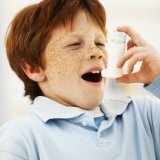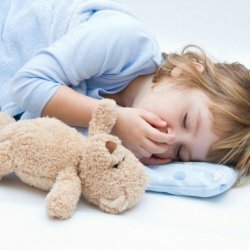Diagnosis of bronchial asthma in children

Unfortunately, the diagnosis of bronchial asthma in children in 20% of cases is quite difficult. This is primarily due to the variety of functional and clinical manifestations, which are due to the age of the sick child, the possible combination of other bronchopulmonary diseases, the features of the course of the disease.
To accurately diagnose "bronchial asthma", the child should be examined in a specialized allergic department of the children's hospital. Sometimes such examinations are performed on an outpatient basis under the supervision of an allergist. In addition to the survey for the diagnosis of asthma in children can help survey parents.
The doctor will ask how the pregnancy went, whether there were illnesses, toxicosis, diet violations during pregnancy. How was the delivery, were there any complications during childbirth, did the newborn baby have health problems. What diseases the child suffered, how antibiotics tolerated( if appointed), whether there were any reactions to preventive vaccinations. Does the child have an allergy to the animal's fur, did the child receive breastfeeding, does the child have a food allergy. The doctor is also interested in whether there are any close relatives suffering from allergic diseases, for example, food allergy, bronchial asthma, drug intolerance, pollinosis. In addition, the doctor should ask how the seizures begin in the child, how the attacks of suffocation proceed, seizures begin in a certain season or not.
Find out what the child did before the onset of seizures( this will help to identify possible causes of seizures), for example, whether it was in contact with animals, whether there was physical stress, or a walk in the park. Whether the drugs were used and what effect they had. To the doctor this information at inspection of the child will help to establish correctly the diagnosis and to appoint or nominate effective treatment. Going to see a doctor, it would be nice to take a child's med-card with him, data on tests, past illnesses, diagnostic studies can help a doctor.
The next step in the diagnosis of bronchial asthma is the detection of a causally significant allergen. Skin tests help determine which allergen causes the child's disease. The principle of tests is as follows: on the skin of the patient, small injections or scratches are made from the inside of the forearm, then a solution that contains molecules of a certain allergen is dripped on them. There are ready-made sets of pollen, food, household allergens. If a child has a blister, this indicates an increased sensitivity to this allergen. The sample is placed for 20 minutes, then examined by a doctor. Such samples help identify a substance that causes an allergic reaction in the patient. This method is quite simple, but it is necessary to perform skin tests exclusively in the allergological room. They must be conducted by a specially trained nurse under the supervision of an allergist. All this is important, because the skin tests have contraindications. Skin test is not put:
- during an attack, with concomitant exacerbation of another allergic disease;
- immediately after an attack if antiallergic drugs are used;
- for children under 3 years old( small children do not allow scratching, and then still do not touch the allergen solution with 20 minutes hands).
Laboratory methods will detect causative allergens, and neither the age nor the state of the child's health affects these methods. Most often an enzyme-linked immunosorbent assay( ELISA) is performed. For the study, blood is taken from the vein and is determined in it for the presence of specific protective antibodies, which are developed to influence the "guilty" repeat of the allergen.
Allergic examination of a child is carried out every 2-3 years, because the spectrum of allergens changes over time. If a child( older than 5 years) has a suspicion of asthma, then they study the function of external respiration. This method of research will help to select an effective medication individually.



